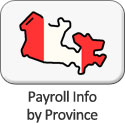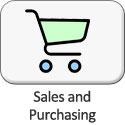Cloud Based Payroll Software
Payroll is a must for all companies, large and small. Employees count on an uninterrupted flow of their earnings each period, and businesses are relying more heavily on online and cloud based payroll software services to help them perform this mission-critical task. With such an important responsibility, it's important to understand the groundwork and criteria that makeup a reliable internet-based payroll solution.
Bringing Payroll Processing Home
The recent Global Payroll Survey by Ernst and Young1 shows that businesses choose an in-house payroll approach by more than 2-to-1 over the traditional outsourcing method. This is due in large part to the perception that in-house managed payroll provides a higher level of efficiency and control in a real-time environment.
For the past 3 decades, businesses across North America have realized the benefits of employing computer-based software to bring the payroll process closer to home. Today's software tools have been embraced by thousands of organizations across all business sectors, and have played a large part in streamlining the payroll process. Many small to medium sized businesses are seeing improved workflow and also taking advantage of both the cost savings and the reduced administrative manpower that was formerly associated with running a payroll department.
What to Look For in a Payroll Solution
Businesses look to satisfy a number of criteria when researching a cloud based payroll solution. Typically, the primary drivers are data accessibility and the increased efficiencies that lead to reduced overhead, reduction in payroll-related spending, improved, data security, transaction visibility, payroll compliance, and management reporting. But with so many options on the market, where does one begin?
From a technology standpoint, the key to successful payroll management software lies in accurate, transaction-based record keeping. This approach provides functionality that stores critical information about each and every payroll record's change, update, and save transaction. Many payroll solutions record changes and results only, but do not provide the thorough record-keeping approach that is required in today's increasingly-scrutinized financial settings.
Another key to a successful payroll software solution is the ability to customize the solution to a given business's needs. Many of today's software provide templates and custom reports that support the post-payroll period, but some fall short and do not provide the functionality and accessibility needed to manage the process from the beginning. Today's payroll software must offer task-specific customizations that can be tailored to each business and its specific needs.
Common Requirements in Payroll Software
When companies consider a payroll software solution, they typically look for a mature, proven tool that satisfies any or all of the following requirements:
- Customizable Options - Features and settings that support your company-specific needs, such as user-definable functions, province-specific Workers Compensation, and customized program views.
- Powerful Calculation Functions - The ability to use an unlimited number of earnings, deductions, benefits and accumulators, flexible employee payment schedules, and fast/efficient calculations.
- Security - Features that provide peace-of-mind such as employee and user-defined access privileges, user authentication, and the use of today's current web technologies.
- Employee Features - Options that enhance the employee payroll experience such as e-mail pay stubs, individual employee self-service accounts, and multi-lingual support.
- Comprehensive Reporting - Intuitive reporting features that allow you to preview the final document, customized reporting to suite your situation, and detailed payroll journals and transaction statements.
- Third-Party Integration - The ability to perform direct deposit/electronic funds transfer (EFT), accounting software integration, and automatic tax calculations that support changing Provincial and Federal payroll requirements.
- Support for Staff and Company Growth - Features that will support your growing business such as templates for adding new employees, the ability to create unlimited payrolls, and employee groups to assist in data analysis.
- Year-End Support - Options that make the year-end process easy, such as per-transaction data recording, simplified tax filings, and the ability to view and edit T4, T4A and Relevé 1 forms if needed.
Consider Your Company Workflow
If a given software solution is able to provide the common requirements listed above, the choice may be simple. However, the best solution is not always one that simply performs the necessary tasks to get you from point A to point B. Look for a software solution that strikes a good balance between usability (refer to the five E's2; Effective, Efficient, Engaging, Error Tolerant, and Easy to Learn) while performing the task flawlessly from a technically perspective.
Consider also the overall payroll process and the many details that your staff will encounter each day. Will the proposed solution achieve the end result of accurate pay cheques and reporting, but at the expense of irritated payroll staff? Most will agree that the optimal solution is a balance between required features and well-rounded usability.
Any proposed payroll software solution should also be able to satisfy a set of practical needs in order to ensure a smooth daily workflow, including the necessary technical details to round out the process:
- Payroll updates that are applied automatically, negating the need for user involvement.
- Stable and reliable software with a proven customer base.
- Failover and redundant services for unforeseen software or hardware events
- Experienced help desk staff to support technical needs if needed, including training and support.
- Centralized payroll reporting to meet unique business requirements.
- E-mail alerts when staff interaction is required, so that important details are not overlooked.
- Software License Compliancy to negate any interruptions in the payroll service.
- Fast access to relevant information when needed for urgent payroll events.
What's Next?
There are a number of excellent web-based payroll services available today. The best approach is to first decide on the method that your business will employ; will it be a hands-on approach where your staff are responsible for the day-to-day payroll operations, or will you consider an outsourced approach and contract the task to a service professional?
- Begin with a list of your main requirements - Start with a list of your company's payroll goals and objectives, and include your financial personnel's "must-have" features. Remember to consult your payroll staff to be aware of other features and benefits that they might find helpful. Look for a good balance between the basic payroll processing services you need immediately (e.g. customized reports, employee self-service and EFT/direct deposit, etc.) and any additional features that will complete your requirements.
- Review the Technology - Involve your IT department and solicit their feedback on the kind of system that will integrate well with your current systems and/or HR platform (many businesses are opting for an integrated Payroll/HR tool from the outset). Ask about data security and employee privacy. These are all important topics and need to be fully addressed by any proposed vendor.
- Choose a provider with a proven track record - Experience and industry knowledge does not come overnight. Though many online vendors are new to the market and offer a number of options, you may wish to trust your payroll to a more seasoned provider that comes with an excellent record of reliability and customer service.
Article by Gerald Adams, Online Services Director at CanPay Software Inc, providers of Canadian payroll and HR software solutions for more than 30 years, and makers of eNETEmployer, a unique web-based Payroll, HR and Employee Scheduling solution. Visit www.enetemployer.com today for your FREE trial.
1 Ernst and Young "Global Payroll Survey" - April 2013
2 Whitney Interactive "What Does Usability Mean: Looking Beyond Ease of Use" - 2011


